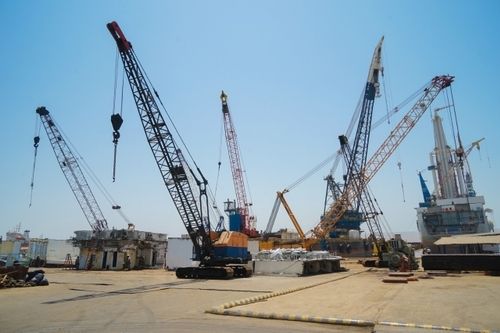Amid Long-Standing Calls by Private Port Players: Centre Introduces Draft Guidelines for Tariff Migration at Major Ports
In response to the growing demand from private port players, the central government has released draft guidelines that could bring much-needed changes to tariff structures at major Indian ports. These guidelines aim to offer a more market-driven approach, allowing concessionaires operating under public-private-partnership (PPP) agreements to switch from regulated tariff regimes to a more flexible, market-based system.

The move comes after years of lobbying by PPP operators, who have argued that the current tariff system creates an uneven playing field compared to fully private ports. The government, in its draft proposal, acknowledges that the landscape of India’s port sector has evolved significantly, making the original tariff regulations less relevant in the current context.
A Shift Toward Deregulation
When India first introduced tariff regulations for ports in 2005, the competitive environment in the country’s port sector was far more limited than it is today. At that time, the regulatory framework was aimed at protecting the interests of port users while ensuring that operators—particularly those working under the PPP model—were still able to earn fair returns. This also helped foster competition and encourage operational efficiency across the sector.
However, the Ministry of Shipping noted in its draft guidelines that the long-term goal outlined in the 2005 Tariff Guidelines was always to move toward competitive pricing. “The market and the competitive landscape in the Indian port sector has since witnessed a significant shift,” the ministry stated.
Today, the regulatory structure for tariffs in government-controlled ports is spread across three separate regimes: the Tariff Guideline of 2005, which was later superseded by the 2019 guidelines; the Tariff Guideline of 2008; and the guideline introduced in 2013. Operators with older concession agreements remain bound by the tariff regimes that were in place when their contracts were signed. This has led to discrepancies between operators, particularly when comparing PPP players with fully private port operators, who are free to set their own tariffs based on market conditions.
The introduction of the draft guidelines aims to level this playing field by giving PPP players the ability to determine their own Scale of Rates (SOR). According to the proposed framework, operators will have the freedom to set tariffs in line with market demand and conditions, thus moving closer to the market-driven approach seen in privately operated ports.
The Landlord Model and Its Impact
The Ministry of Shipping also highlighted the broader shift in India’s port management strategy. In the past, major ports were not only regulatory authorities but also service providers to end-users. As a result, tariff regulations played a critical role in protecting the interests of both port users and the PPP operators.
However, the need for strict tariff regulation has diminished with the transition to the “landlord” port model, where the government retains ownership of the port while leasing operations to private companies. The increased private sector involvement has further rendered some aspects of the old regulatory framework obsolete.
Several PPP operators have raised concerns in recent years that the current tariff structure puts them at a disadvantage compared to fully private ports, which are not bound by the same regulatory limitations. These operators have claimed that the lack of parity in tariff-setting makes PPP projects less appealing from a financial perspective, potentially discouraging investment in future projects.
The new guidelines could alleviate this issue by giving operators more control over their pricing. At the same time, the government remains keen to protect its own revenue interests. While the guidelines provide greater pricing freedom, they ensure that this will not negatively impact the revenue the government earns from these projects.
Protecting Government Revenues
One of the key concerns raised by the government during the drafting process was ensuring that the shift to a market-based tariff regime would not result in a loss of revenue from PPP projects. To address this, the draft guidelines stipulate that the royalty payments made to the government by PPP operators will not decrease.
“As an additional measure, the Royalty as the Revenue share of the Major Port should/would not go below what it would have got under the regime when the tariff was fixed/determined as per the Tariff Guidelines,” the draft document stated. This will be achieved by converting the revenue share to royalty based on the project’s Annual Revenue Requirement, which was calculated under the previous regulatory framework.
Essentially, while operators will be allowed to set their own tariffs, they will still be required to pay a royalty to the government that is equivalent to what they would have paid under the older, more regulated system. This ensures that the shift to a market-based regime does not adversely affect government revenues, even as it offers greater flexibility to operators.
Balancing Operator Freedom and Government Control
The proposed guidelines represent a delicate balancing act for the government. On the one hand, they address the concerns raised by private port players and PPP operators, who have long argued that the current system is outdated and restrictive. By moving toward a market-based pricing model, the government hopes to create a more competitive environment that encourages investment in the sector.
On the other hand, the government has taken steps to ensure that this new flexibility does not result in a loss of revenue. By maintaining the current structure for royalty payments, the government has protected its financial interests while still giving operators the freedom to adjust tariffs according to market conditions.
Stakeholder Input and Next Steps
The government has invited stakeholders to submit their input on the draft guidelines, with the deadline for feedback set for October 25. This consultation process is a crucial step in finalizing the guidelines, as the government aims to strike the right balance between deregulation and protecting the interests of both port users and operators.
The release of the draft guidelines marks a significant milestone in India’s ongoing efforts to modernize its port sector. If the guidelines are adopted in their current form, they could lead to a more level playing field between PPP operators and fully private ports, while also ensuring that government revenues are not negatively impacted.
As the Indian port sector continues to evolve, these changes could help make PPP projects more attractive to investors, potentially driving greater private sector participation in the years to come. With stakeholders now being invited to weigh in, the next few months will be crucial in determining the future of tariff regulation at India’s major ports.
Author: shipping inbox
shipping and maritime related web portal






